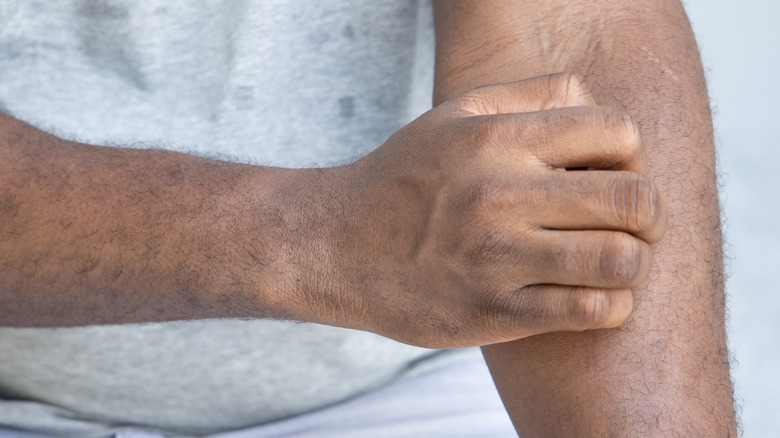What Happens If Ringworm Goes Untreated?
There are not a lot of conditions that sound grosser than 'ringworm', but despite the linguistic association with small wriggly creatures, ringworm has nothing to do with actual worms. According to the CDC, the skin and/or nail condition, which is usually characterized by raised, reddish, scaly patches, can be caused by dozens of different types of fungi — and it's very common. Dermatologist Alok Vij told Cleveland Clinic, "Ringworm, or tinea, is not a creature but an infection caused by fungus."
The 'ring' part of the name refers to the fact that the rash usually takes a circular, ring-like form.
Tiny fungal spores, called dermatophytes, live and multiply in warm, moist environments, like on the feet and groin, per Healthline. The same types of fungi that cause ringworm on the arms or legs can also cause athlete's foot or jock itch. And the fungi's favorite food supply? Proteins found in dead skin cells on the outer layers of skin.
Ringworm can be treated with antifungal medication
Ringworm is usually treated with an over-the-counter antifungal medication. In many cases, that treatment will be enough to kill the fungus and clear up the rash within two to four weeks (via Healthline).
If left untreated though, there's no telling how long it could stick around. In a healthy person with a strong immune system, it may clear up in a matter of weeks or months — or it might not. The spores can live for many months in a favorable environment. And while serious complications are rare, ringworm is very contagious and can easily spread to other body parts, or to another person, so long as some of the fungal spores remain alive.
Even though ringworm is typically easy to treat, it's better to avoid getting it in the first place. The best prevention is good hygiene — drying off thoroughly after showering, wearing protective footwear in locker rooms and shared shower areas, and not sharing towels and other personal hygiene items.


